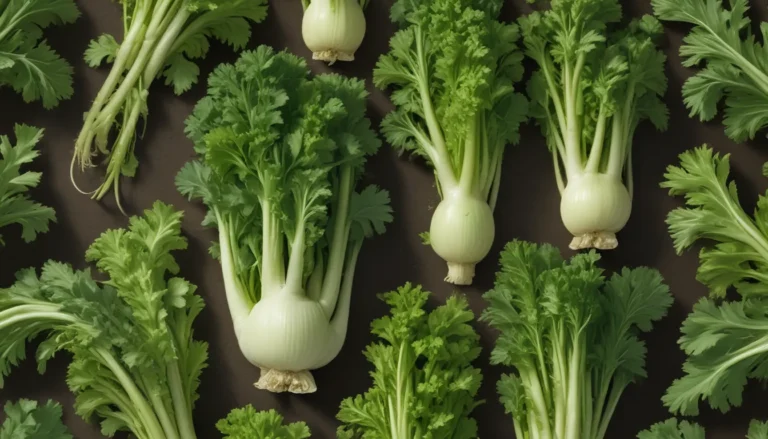How to Grow Enormous Pumpkins

Do you dream of growing pumpkins so massive that they seem straight out of a fairy tale? If so, you’re in luck. With a bit of dedication, the right knowledge, and plenty of sunshine, you can grow your very own giant pumpkin. The process can be exciting, rewarding, and potentially profitable. So, let’s dive into the world of giant pumpkin growing and learn how to transform your humble garden into a field of behemoth gourds.
What You’ll Learn
- Preparation Is Key
- Sowing Seeds
- Transplanting the Seedling
- Caring for Your Giant Cucurbit
- Feeding Your Hungry Baby
- Supporting the Pumpkin
Preparation Is Key
Before you rush into growing giant pumpkins, it’s crucial to prepare adequately. Here are some essential steps to follow:
- Choose the Right Seed: Opt for cultivars like ‘Dill’s Atlantic Giant’ for pumpkins ranging from 300 to 500 pounds or ‘Wallace’s Whoppers’ for even larger fruits.
- Select a Suitable Location: Find a sunlit spot with at least eight hours of sunlight daily and prepare a 10×10 foot bed for each pumpkin, ensuring proper drainage.
- Soil Preparation: Till the soil, amend it with compost, and shape it into a mound for optimal growth conditions.
- Seedling Space: If you’re growing more than one plant, create a 20-foot bed to accommodate multiple seedlings.
- Soil Testing: Check the pH of the soil and amend nutrient deficiencies as needed.
Sowing Seeds
Once you have your preparation in place, you can start sowing seeds. Here are the steps to follow:
- Seed Soaking: Soak seeds in warm water for 12 hours before sowing to promote germination.
- Direct Sowing: Plant seeds one inch deep or start them indoors in biodegradable pots filled with seed-starting mix.
- Indoor Germination: Keep the soil moist and warm, ensuring at least eight hours of sunlight or using a grow light for optimal growth.
Transplanting the Seedling
When your seedlings are ready, it’s time to transplant them into the prepared mound. Follow these steps:
- Select Strong Seedlings: Choose the healthiest seedlings for transplanting, ensuring they have two to three true leaves.
- Transplanting: Dig a hole in the center of the mound, place the seedling in, backfill with soil, and water thoroughly.
- Protection: Consider using a floating row cover to shield young plants from intense sunlight or winds until established.
Caring for Your Giant Cucurbit
Growing giant pumpkins requires careful attention to care. Here are some essential tips:
- Watering: Ensure your pumpkin gets regular water, avoiding direct moisture on foliage or fruit to prevent rot.
- Mulching: Apply a layer of mulch around the plant while leaving space around the base to prevent rot.
- Feeding: Fertilize regularly with high-nitrogen fertilizers initially, transitioning to high-phosphorus and high-potassium options as the plant matures.
- Pruning: Trim lateral vines and focus the plant’s energy on fruit production.
Feeding Your Hungry Baby
Now, you might be wondering about the myth of feeding pumpkins with milk. Here’s the scoop:
- Calcium Source: Milk provides calcium, essential for strengthening cell walls and preventing fruit rot.
- Humic Acids: Instead of milk, consider using humic acids for calcium uptake without risking vine damage.
- Fertilization: Regular feeding with high-phosphorus and high-potassium nutrients is crucial for healthy growth.
Supporting the Pumpkin
As your pumpkin grows, it’s essential to provide support and protection. Here’s what you need to do:
- Wooden Pallet: Place a pallet underneath the developing pumpkin to allow airflow and ease of movement.
- Shading: Use a shade cloth or row cover to protect the fruit from excessive sun exposure, preventing skin cracking and rot.
- Competitive Fun: Consider entering your giant pumpkin into local fairs or competitions to celebrate your gardening achievements.
Enormously Squashy Fun
Growing giant pumpkins can be a fun and rewarding experience. From seed selection to care and feeding, every step plays a crucial role in producing a record-breaking fruit. So, if you’re ready to embark on the journey of growing monstrous gourds, follow these steps and watch your pumpkin patch transform into a patch of giants. Don’t forget to share your stories and photos in the comments below!
To learn more about growing pumpkins of all sizes, check out these helpful guides:
- Best Companion Plants to Grow with Pumpkins
- How Do I Know When My Pumpkin Is Ripe? Picking and Harvest Tips
- 5 Reasons why Your Pumpkin Isn’t Producing Fruit
- Nutrition and Health Benefits of Pumpkin Seeds
Happy growing!





